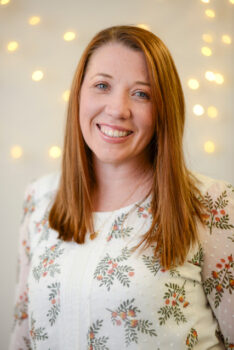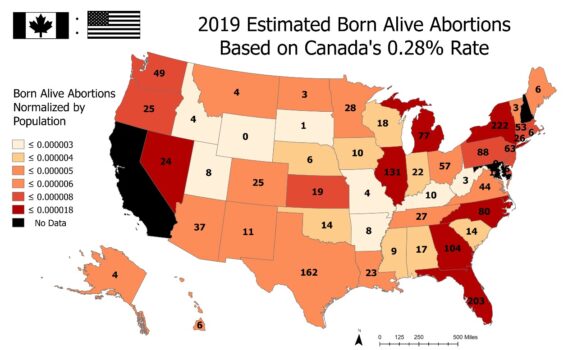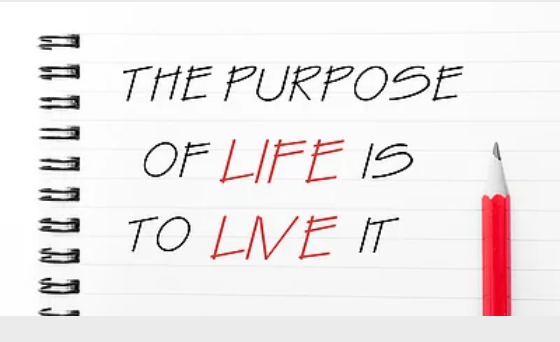Months after the Supreme Court’s decision to overturn Roe v. Wade, voters across five states will be considering ballot measures relating to abortion on Nov. 8.
Some of those measures aim to expand abortion access, while others seek the opposite. But whatever voters decide, one oft-overlooked group is asking that their experiences be considered in the process.
An Untold Story
“There’s another part of this [abortion] story that’s not being told,” said Sarah Moe, who heads up the Abortion Survivors Network Education and Policy Center (ASN), a Missouri-based nonprofit.
“The Abortion Survivors Network is an organization that’s actually led by abortion survivors,” ‘Moe’ said. “It empowers and equips abortion survivors to work through their trauma, their questions, and it’s a safe place for them in a society that really thinks their lives should have ended.”
ASN’s community engagement coordinator, California resident Jennifer Milbourn, takes special care to maintain that atmosphere of safety, understanding all too well how elusive it can be.
When Milbourne was 19 years old, she found out that she was a survivor of a vacuum aspiration abortion. “I was shopping with my adoptive mom and challenged her to tell me something I didn’t know about myself, and that’s what came out of her mouth.”
Milbourn learned that her biological mother had tried to abort her in the spring of 1978, but as her mother was further along in the gestation process than she had told the clinician, the abortion was unsuccessful.
“They began the procedure and realized that my head was larger than expected,” Milbourn said.

While unable to complete the procedure, the abortionist did manage to tear the embryonic sac. Assuming that Milbourn’s mother had miscarried, he sent her home. Then, months later, Milbourn was born.
At first, learning what she had survived came as a shock to Milbourn, and unsure how to process her feelings, she repressed them until years later when, as a mother herself, she was forced to confront them head-on.
“For a survivor of an abortion, there’s a lot of trauma that comes with it,” she said. “Rejection is the biggest component of that.”
However, bolstered by her Christian faith and the support of her family members, Milbourn found healing.
“It has meant a lot for her to have me just be there for her in every capacity that she needs me,” said Milbourn’s husband, Noah, who volunteers as the men’s program coordinator at ASN.
“I opened myself up to make sure that she had everything she needed, especially through this journey of finding out and healing from the trauma of knowing that she was rejected, knowing that she was unwanted. And that is a difficulty all in itself,” he said.
A Robin Finds Her Song
Like Milbourn, Montanan pastor and abortion survivor Robin Sertell has spent much of her life healing from the trauma of what she endured in the womb.
At the age of 9, during one of many stints in the hospital, Sertell learned from her grandmother that she had survived not just one but three saline abortion attempts that had left her with a variety of health issues, including difficulties hearing and walking, and problems with her skin, hair, and digestive and urinary tracts.
“The trauma is very real in my life,” she said, adding that she had also experienced symptoms characteristic of post-traumatic stress disorder.
Additionally, the realization of her mother’s initial rejection had a lasting impact on Sertell’s emotional health and her ability to trust others.
And while medical treatment and her faith have brought her to a place of healing and forgiveness, she noted, “The reality of these effects on my life means I really desperately want to see a world where nobody ever has to go through what I went through again.”
A Lack of Accurate Reporting
Although the voices of survivors like Milbourn and Sertell are rarely heard in abortion conversations, Moe said they are greater in number than previously thought.
A 1981 estimate by the Centers for Disease Control and Prevention (CDC) placed the annual number of infants born alive after a failed abortion at between 400 and 500.
However, according to Moe, ASN questioned those numbers “because the United States has woefully horrible reporting requirements surrounding the abortion procedures that are done across the country.”
Currently, there is no federal requirement that states report abortion data to the CDC, but using the data available and the annual Canadian rate of infants born alive after a failed abortion (0.28 percent), ASN conducted a case study to extrapolate an updated estimate for the United States.

The results indicated that in 2019, there would have been approximately 1,780 infants born alive after a failed abortion.
While acknowledging that 0.28 percent is still a rare occurrence, Moe noted that other factors often considered in the abortion debate—such as rape, incest, or life-threatening health risks to the mother—are also rare, as per a Guttmacher Institute survey.
Lamenting that legislation to protect born-alive infants is sometimes dismissed as unnecessary, Moe added: “My goal is to help convince people that born-alive legislation may not affect them and their life, but it’s a decision to create a future you’re proud of—a future in which children who are at risk can thrive.
“With our data, hopefully, we can show that it’s not just a solution in search of a problem but, in fact, these are real lives.”
States to Decide
Since the reversal of Roe v. Wade, six states have put the question of abortion on the ballot.
Primary voters in Kansas rejected a constitutional amendment declaring that nothing in the state’s constitution outlines a right to an abortion, and on Nov. 8, other abortion-related ballot measures will be considered in California, Kentucky, Michigan, Montana, and Vermont.
In Montana, LR-131 would entitle born-alive infants to “medically appropriate and reasonable” medical treatment and would impose criminal penalties on doctors who fail to provide that treatment.
Sertell, who supports the measure, contended: “Many abortion survivors … have been laid aside on cold steel tables and declared medical waste and left alone, crying and screaming.
“I was very blessed to not be in that situation because my dad was in the room and advocated for my life, but … there is an absence of proper legal protection, and that needs to change.”
However, some health providers have opposed the referendum, holding that laws already exist to protect the lives of infants, and that the new law would force doctors to provide care where it would be futile.
“LR-131 will deny grieving families the choice to spend precious time with their infant, even to provide spiritual care,” argues an open letter signed by more than 700 Montana health care providers.
Sertell, however, holds that such arguments are misleading.
“The detractors are saying this will force people to have unwanted care,” she said. “There is no forcing. This is saying that they must be treated as a legal person with the right to medically appropriate and reasonable care.”
California
In California, Proposition 1 would amend the state’s constitution to forbid state interference with an individual’s “reproductive freedom,” including their decision to have an abortion or to use or refuse contraceptives.
The amendment is supported by Planned Parenthood Affiliates of California President and CEO Jodi Hicks, who in July stated, “Prop 1 will ensure that individuals and families continue to have the freedom to decide if and when to have children because access to affordable, comprehensive reproductive health care—including abortion and birth control—allows people to plan their lives and achieve their dreams.”
Milbourn, however, said she felt the state had been underhanded in its presentation of the amendment.
“Every bill in the voter guide has pages of fluff and description, but Prop 1 is one tiny paragraph, right in the middle, hidden where no one can see it,” she noted. “I feel like that’s manipulation. That’s not a correct way to conduct business, if you will, at all.”
Noah Milbourn added that he found the positioning of abortion as a form of health care by those like Hicks to be offensive.
“That baby growing inside that woman is not a disease,” he said. “This is something that has a heartbeat, something that has the very essence of life. Calling an abortion health care is [like] saying that a child is a disease—that it’s something that can just be eradicated and no thought has to be given toward that child or that life.”
Further noting that his children would not have been born if his wife had succumbed to what others call “health care,” Milbourn added: “There are second-generation and third-generation survivors today because doctors failed. Usually, when doctors fail, somebody dies. But in abortion, when a doctor fails, people live.”
Hicks did not return a request for comment.
But whether the ballot measures pass or fail, the Milbourns and Sertell said they hoped voters would take their perspectives into account.
“Babies survive abortions,” Sertell said. “Not clumps of cells, not fetuses … but babies, human beings, survive abortions, and I am one of them. We are just as human as you and everyone else in the world, and the experience of having someone try to kill you before you were born makes a lasting impression on you—physically, emotionally, and spiritually—that no other human should have to go through.”
(Published first in The Epoch Times)


My opinion on a woman getting an abortion,
When a woman gets an abortion she is taking a risk with never being able to bare a child in the future.
I believe there is substantial research on this opinion and women need to have a clear understanding that a doctor can damage her ability to start a family! Some of these doctors make sure they damage, due harm to young women because of their decision to abort in the first place!